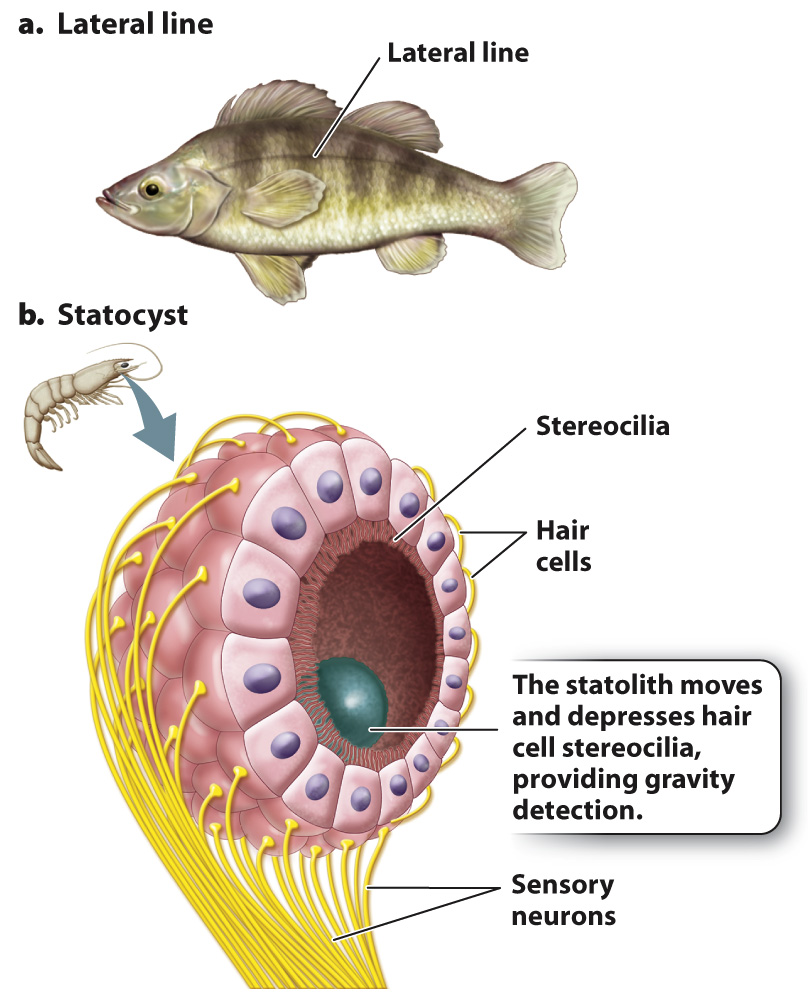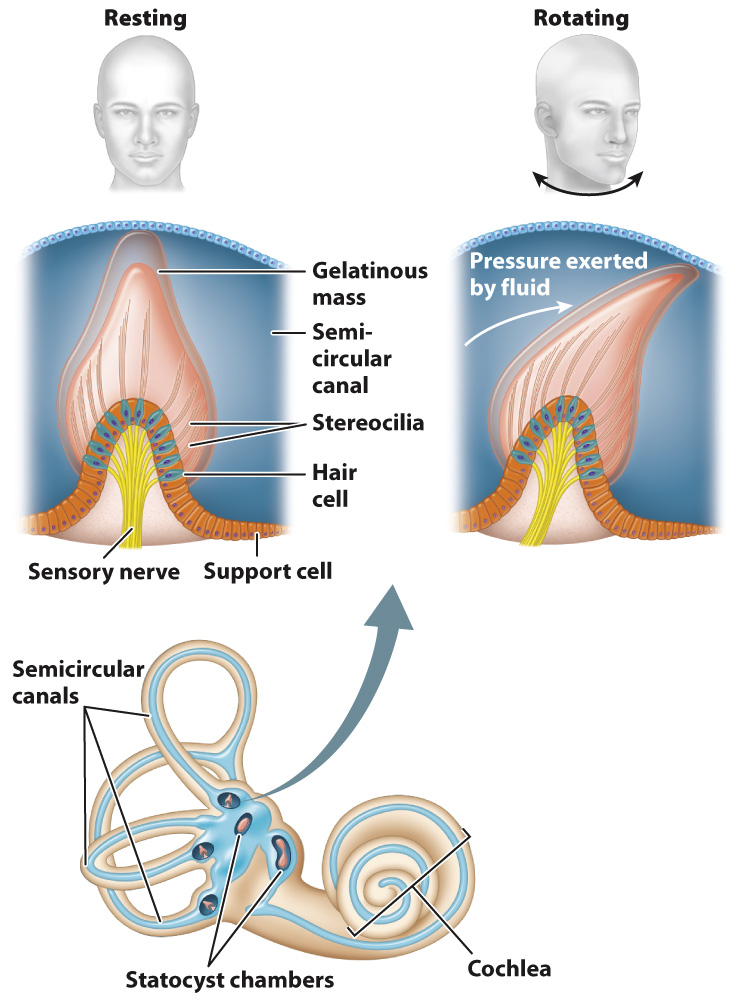Hair cells sense gravity and motion.
Hair cells detect gravity and motion in many animals. Hair cells contained in the lateral line system of fishes and sharks sense water vibrations that indicate nearby threats or prey, as well as their own motion (Fig. 36.6a). The lateral line is a sensory organ along both sides of the body that uses hair cells to detect movement of the surrounding water.

A sense of gravity helps animals to orient their body within the environment, providing a sense of “up” and “down.” Even buoyant aquatic animals depend on a sense of gravity to keep oriented to the water’s surface or within the water column. Gravity-
The mammalian inner ear contains organs that sense motions of the head and its orientation with respect to gravity. These organs make up the vestibular system (Fig. 36.7), which consists of two statocyst chambers and three semicircular canals. These statocyst chambers are similar to those of invertebrates, providing a sense of gravity and body orientation with respect to motion. Hair cells located within the semicircular canals sense angular motions of the head in three perpendicular planes, providing a sense of balance. When the head rotates, gelatinous fluid in the semicircular canals is accelerated, deflecting the stereocilia of the hair cells to activate sensory neurons. The brain interprets differences in the motion of the hair cells among the three semicircular canals to resolve angular motions of the head. As a result, mammals and birds react much faster to head motion than to visual cues, and this ability helps them to stabilize their gaze.

Quick Check 3 Why are you unstable when you try to walk after you spin in place or take a ride on a merry-
Quick Check 3 Answer
Spinning causes the hair cells in the semicircular canals to accommodate to the new motion. When you stop spinning, the hair cells detect a change in angular motion of the head (relative to the motion when your head was spinning), which leads to a sense of imbalance when you stand or try to walk.